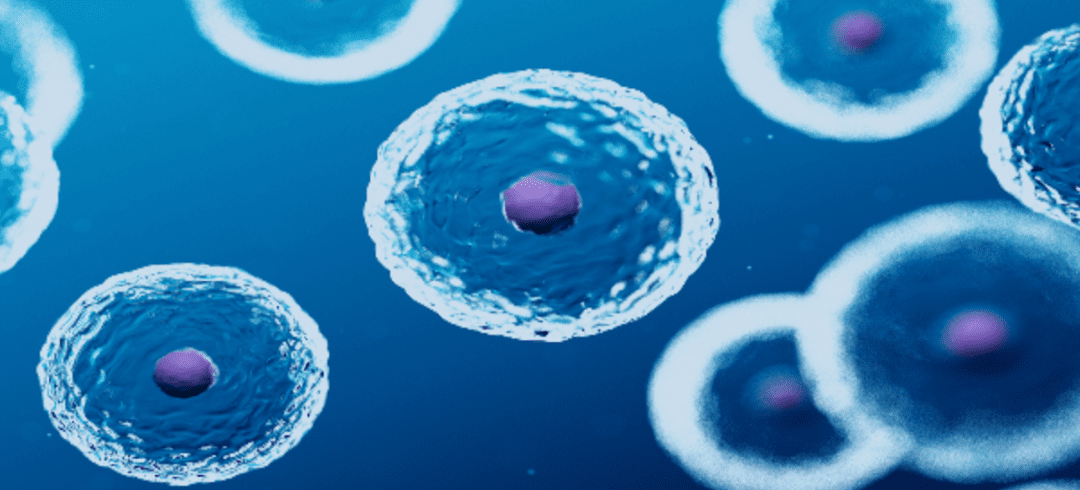
by admin | Jun 24, 2022 | Mesenchymal Stem Cells, Exosomes, Stem Cell Research, Stem Cell Therapy
Mesenchymal stem cells (MSCs) have been widely studied and increasingly recognized as a potential therapeutic with the ability to initiate and support tissue regeneration and remodeling. While over 1100 clinical trials have been conducted to assess the therapeutic benefits of MSCs, there continues to be widespread variation surrounding the potential treatment outcomes associated with these cells.
This review, authored by Chang, Yan, Yao, Zhang, Li, and Mao, focuses primarily on profiling the effects of the secretome, or the effects of paracrine signals of MSC, as well as highlights the various engineering approaches used to improve these MSC secretomes. Chang et al. also review recent advances in biomaterials-based therapeutic strategies for the delivery of MSCs and MSC-derived secretomes.
Recent research has demonstrated paracrine signaling as the primary mechanism of MSC therapeutic efficacy. This shift towards the MSC secretome in applications ranging from cartilage regeneration to cardiovascular and other microenvironments has demonstrated its therapeutic potential in prevalent injury models. Additionally, the versatility of MSCs allows them to be specifically tailored using biomaterials toward specific therapeutic outcomes.
A specific example of MSC secretome’s therapeutic potential is their ability to support cardiovascular tissue repair through minimization of fibrotic scarring of cardiac tissue typically observed to occur during a myocardial infarction (MI). Additionally, research has demonstrated MSC secretomes facilitate the proliferative, angiogenic, and anti-inflammatory phases of the wound healing process.
Secretome transfer occurring between MSCs and other cells in the target area primarily occurs through the release of extracellular vesicles (EVs) and is considered a safer form of therapeutic application compared to MSC therapy. MSC secretomes can also be specifically engineered through hypoxia, treatment with bioactive agents, and modulating cell-cell and ECM interactions in the MSC culture.
One of the biggest challenges facing the therapeutic efficacy of MSC is their limited cell survival, retention, and engraftment following injection or transplantation (found to be as low as 1% surviving one day after implantation). Recent studies have demonstrated MSC secretome, and specifically, EVs, although they remain a significant obstacle, are a promising alternative and able to bypass a number of cellular challenges, including cell survival.
Further consideration and approaches to increasing survival rates of MSCs include experimenting with a wide variety of biomaterials as a way to promote adaptation in the target implantation area. This includes looking for biomaterials to regulate oxygen tension levels, glucose supply, mechanical stress, and pH levels, which collectively can be used to regulate metabolic pathways of the MSC, effectively influencing cell survival and their ability to be used as therapeutic treatment options.
Despite the recent advances in the use of MSC secretomes and their delivery strategies, Chang et al. call for continued study of the subject and specifically recommend developing a specific set of paracrine cues to be used as a well-defined formulation in future therapeutic applications.
The authors also point out that the use of EVs and other direct applications of the MSC secretome are thought to be promising for the treatment of osteoarthritis, ischemic stroke, and coronavirus-related diseases. Considering this, Chang et al. highlight the increasing need to fully understand the paracrine signaling effects of MSC therapies and the delivery strategies associated with this application.
Source: “Effects of Mesenchymal Stem Cell‐Derived Paracrine Signals and ….” 12 Jan. 2021, https://onlinelibrary.wiley.com/doi/full/10.1002/adhm.202001689.

by Stemedix | Jun 20, 2022 | Transverse Myelitis, Stem Cell Research, Stem Cell Therapy
Patients suffering from uncommon conditions, such as transverse myelitis, often have limited treatment options, since these conditions lack the funding and the research needed to understand the disease and its causes. Here we will discuss stem cells for Transverse Myelitis.
Regenerative medicine, also known as stem cell therapy, unlocks a new understanding of conditions and treatments. Physicians are discovering the potential of new methodologies, such as stem cell therapy. This alternative therapy may offer options for rare and common conditions affecting millions of patients worldwide.
Transverse myelitis is a rare condition, affecting only about 1400 people per year. Understanding and treating transverse myelitis can improve the lives of patients and their loved ones and may lead to breakthroughs in treating related disorders and diseases with overlapping symptoms.
What Is Transverse Myelitis?
Transverse myelitis is a neurological condition in which inflammation in the spinal cord damages the protective coating around the neurons, called myelin. Damaged myelin disrupts communication between the nerves in the spinal cord and the rest of the body, which can result in partial or total paralysis.
Patients with transverse myelitis often experience weakness in their arms and legs, bladder and bowel dysfunctions, sharp, radiating pain, and abnormal sensations like burning, tingling, and numbness.
How Does Stem Cell Therapy Work?
Stem cells can differentiate into different types of specialized cells that develop into blood, bones, organs, and other tissues. These specialized cells can repair, restore, replace, and regenerate cells.
In stem cell therapy treatments, physicians strategically administer the cells to best target damaged or destroyed tissues. The stem cells then work to rapidly regenerate, differentiating into the cells necessary to heal the damaged tissue.
How Can Stem Cells Manage Transverse Myelitis?
Researchers are investigating stem cell treatments for transverse myelitis by exploring the potential for stem cells to restore demyelinated spinal cords. These studies help physicians understand how transverse myelitis damages the myelin sheath and the mechanisms that may be able to treat the disease.
Researchers are currently seeing promising results in differentiating stem cells into healthy motor neurons, directing the new cells to repair the damaged myelin sheath and restore their connection with muscle fibers.
Additionally, stem cell therapies show promise in regulating the immune system and regulating inflammatory proteins, working to restore function to the spinal cords of patients who have partial paralysis due to the progression of transverse myelitis.
Stem cell studies working with transverse myelitis patients work to discover new possibilities in preventing the progression of the disease, reducing the relapse rate, and diminishing the harmful inflammatory effects of the condition. If you would like to learn more about stem cells for Transverse Myelitis contact us today!

by admin | Jun 3, 2022 | Parkinson's Disease, Stem Cell Research
Research has shown neuroinflammation to have a significant role in the pathogenesis of Parkinson’s disease (PD). Much of this same research has also demonstrated mesenchymal stem cells (MSCs), and specifically, allogeneic bone marrow-derived MSCs, can be effectively used as an immunomodulatory therapy for the potential treatment of PD.
The goal of Schiess et al.’s study was to evaluate the safety and tolerability of first-of-its-kind intravenous allogeneic bone marrow-derived MSCs (allo-hMSCs) in patients with PD.
Neurological disorders continue to be the leading cause of disability-adjusted life years lost worldwide (a statistical measure of years of healthy life lost as a result of death or disability relating to the constitution). While the numbers of those diagnosed with neurological disorders, including stroke, multiple sclerosis, motor neuron disease, and dementia continue to increase at a rapid rate, none are growing as fast as PD.
Considering the rapid progression of progressively intensifying symptoms associated with PD and the relatively poor progress in the discovery of therapies to prevent, or even slow, progression of PD, the authors identified the identification of effective and safe disease-modifying therapies for PD to be a priority.
As part of this study, Schiess et al. studied the peripheral immune system in PD neurodegeneration through the evaluation of LPS rat models, glial cells, and cerebrospinal fluid gathered from patients. As a result of these investigations, the authors determined that an adaptive immune response does contribute to progression supporting the rationale for using MSCs as a potential therapy for PD.
To evaluate the effectiveness of this therapy, Scheiss et al. developed and conducted a single-center, open-label, ascending-dose-escalation phase 1 clinical study involving 20 patients with mild to moderate PD. Participants were assigned to single intravenous doses of 1 of 4 doses and evaluated at weeks 3, 12, 24, and 52 post-infusion.
In addition to evaluating the safety and tolerability of an intravenous infusion of bone marrow-derived allow-hMSCs, the research team also evaluated participants for relevant biomarkers for the mechanism of action and clinical assessment of PD progression.
The authors point out that while there were no serious adverse reactions related to the infusion and no responses to donor-specific human leukocyte antigens, the most commonly reported side effect was dyskinesias and hypertension. Further studies will need to monitor the emergence or exacerbation of post-infusion dyskinesias and hypertension to better understand their occurrence as part of this study.
In conclusion, Sheiss et al. found that a single infusion of allogeneic MSCs ranging from 1 to 10×106 intravenous allo-hMSCs/kg was safe, well tolerated, and not immunogenic in patients with mild-to-moderate PD. The authors also found that peripheral inflammation markers appeared to be reduced at 52 weeks after receiving the highest dose, leading to the conclusion that the highest dose had the most significant effect at the 52-week interval.
Based on these findings, the authors recommend moving forward with a phase 2 randomized, placebo-controlled efficacy trial using allo-hMSCs in a larger population of well-defined Parkinson’s disease patients.
Source: “Allogeneic Bone Marrow-Derived Mesenchymal Stem Cell Safety in ….” 27 Mar. 2021, https://movementdisorders.onlinelibrary.wiley.com/doi/full/10.1002/mds.28582.

by admin | May 13, 2022 | Mesenchymal Stem Cells, Stem Cell Research
Multiple system atrophy (MSA) is a rare, degenerative adult-onset neurological disorder that affects your body’s involuntary functions, including blood pressure, breathing, bladder function, and motor control. MSA also demonstrates several symptoms similar to those accompanying Parkinson’s disease, including slow movement, stiff muscles, and loss of balance[1].
Considering the rapid and fatal progression of MSA, there are not currently any long-term drug treatments known to produce therapeutic benefits against the condition. The typical neuropathological hallmarks of MSA are bone marrow destruction and cell loss in the striatonigral region of the brain that results in dopamine deficiency significant enough to result in behavioral abnormalities.
Since mesenchymal stem cells (MSCs) have demonstrated the ability to self-renew and differentiate within a wide variety of tissues, Park et al., in this study, aimed to assess whether the transplantation of human-derived MSCs could have beneficial effects in a double-toxin-induced MSA rat model. Additionally, the authors assessed the signaling-based mechanisms underlying the neuroprotective effects of MSCs.
Specifically, as part of this study, Park et al. studied the effects of MSCs in 60 rats randomly allocated to one of six groups – a control group, a double-toxin group, two groups receiving MSC intra-arterial (IA) injections, and two groups receiving MSC transplantation via intrathecal (IT) injection after double-toxin induction.
After receiving treatment each group of rats underwent a variety of tests, including the Rotarod test, gait test, and grip strength test. Additionally, the brain tissue of the rats was collected, preserved, and evaluated to assess notable differences.
At the conclusion of this study, the authors found clear evidence of the protective effects of MSCs on double-toxin-induced MSA. The study also demonstrated that transplantation of MSCs prevented neuronal cell death and improved behavioral disorders caused by double-toxin-induced MSA, specifically by reducing dopaminergic neurodegeneration and neuroinflammation.
Additionally, Park et al.’s study demonstrated a higher expression of polyamine modulating factor-binding protein 1 and a lower expression of 3-hydroxymethyl-3-methylglutaryl-COA lyase (HMGCL) after MSC transplantation.
Park et al. also point out that further investigation is required to better understand the exact mechanism of neuron-specific knockdown in vivo animal and clinical trials.
The authors of this study conclude that treating MSA with bone-marrow-derived MSCs protects against neuronal loss by reducing polyamine- and cholesterol-induced neural damage and may represent a promising new therapeutic treatment option for MSA.
Source: “Prevention of multiple system atrophy using human bone marrow ….” 11 Jan. 2020, https://stemcellres.biomedcentral.com/track/pdf/10.1186/s13287-020-01590-1.pdf.
[1] “Multiple system atrophy (MSA) – Symptoms and causes – Mayo Clinic.” 21 May. 2020, https://www.mayoclinic.org/diseases-conditions/multiple-system-atrophy/symptoms-causes/syc-20356153. Accessed 4 Apr. 2022.

by admin | May 6, 2022 | Stem Cell Therapy, Mesenchymal Stem Cells, Multiple Sclerosis, Stem Cell Research
Multiple sclerosis (MS) is a chronic inflammatory disease that attacks myelin, the protective sheath that covers nerves and causes progressive and serious communication issues between the brain, central nervous system, and the rest of the body[1].
Currently, it’s estimated that over 2.3 million people worldwide, and over one million people in the US have a diagnosis of MS[2].
While there have been significant improvements in treatments designed to stabilize, delay, and even improve symptoms of MS, new and more effective treatments are needed to improve the long-term outcome associated with the condition.
One area currently being investigated as a potential therapeutic option for treating MS is the use of regenerative medicine, also known as stem cell therapy, and specifically treatment using mesenchymal stem cells (MSCs).
In this review of evidence from preclinical and clinical studies, Gugliandolo et al. examine studies involving the use of MSCs or their derivatives in vivo models of MS and patients affected by MS. The authors also examine and discuss the feasibility of autologous MSCs therapy for MS patients.
Specifically, and when assessed in terms of effectiveness when treating MS, the therapeutic potential of MSCs was associated with their differentiation capacity and paracrine effects, their ability to differentiate toward oligodendrocytes and express oligodendrocyte progenitor cell (OPC) markers, and their capacity for homing (moving towards the damaged area following chemical gradients).
As part of this review, the authors also examined the effectiveness of various sources of MSC in MS models, these sources included bone marrow MSCs (BM-MSCs), adipose tissue-derived MSCs (AD-MSCs), periodontal ligament stem cells (PDLSCs), skin-derived MSCs (S-MSCs), Wharton’s jelly-derived MSCs (WJ-MSCs), human umbilical cord MSCs (UCMSC), human amnion mesenchymal cells (AMCs), placental derived MSCs (PMSCs), and decidua derived MSCs (DMSCs). According to the research reviewed by Gugliandolo et al., all MSCs, regardless of where they were harvested from, demonstrated beneficial effects in the therapeutic treatment of MS.
Specifically, the results demonstrated that MSCs were able to produce some form of protective effects in reducing inflammatory cell infiltration, disease score, demyelination, and blood-brain barrier disruption.
A review of 29 phase 1 or 2 clinical trials registered on clinicaltrials.gov demonstrated that MSCs, regardless of the type and method of administration, demonstrated to be safe and absent of severe adverse effects with the majority demonstrating measurable improvements when used in MS patients.
While clinical trials demonstrated the safety of administration of MSC in MS patients, the authors were particularly interested in learning if autologous MSC transplantation presented some advantages over heterologous administration.
The authors of this review found that samples obtained from healthy controls and MS patients showed similar features, indicating the possibility of autologous stem cell therapy in MS patients. However, other studies found that MSCs obtained from MS patients exhibited a different transcriptional pattern and fewer immunosuppressive functions compared to healthy donor MSCs.
Gugliandolo et al. point out that limits to these experimental studies include the use of animals of a single gender, given that sex-dependent differences exist and the use of different MS models, different number of transplanted cells, different MSCs sources, and routes of administration. These limitations make it difficult to define the optimal treatment in terms of cell type, dose, and administration conditions.
The authors conclude that clinical trials demonstrate the safety and feasibility of MSCs treatment, and also some improvements, but more data on larger cohorts are required to establish their efficacy. Considering the controversial results pertaining to the features of MSCs derived from MS patients, the authors also call for additional research in order to conclusively determine the safety and efficacy of autologous MSCs therapy in MS patients.
Source: “Mesenchymal Stem Cells in Multiple Sclerosis – NCBI.” 17 Nov. 2020, https://www.ncbi.nlm.nih.gov/pmc/articles/PMC7698327/.
[1] “Multiple sclerosis – Symptoms and causes – Mayo Clinic.” 7 Jan. 2022, https://www.mayoclinic.org/diseases-conditions/multiple-sclerosis/symptoms-causes/syc-20350269.
[2] “Understanding MS | National Multiple Sclerosis Society.” https://www.nationalmssociety.org/What-is-MS/MS-FAQ-s.

by Stemedix | May 2, 2022 | Stem Cell Therapy, Regenerative Medicine, Stem Cell Research
When you live with chronic pain, almost any treatment option that offers relief can be tempting. Undergoing surgery for joint pain is a serious decision. Surgery comes with many risks, including potentially long and painful recovery times, and there is no guarantee that surgical treatments will resolve your pain. Before deciding whether surgery is the right step for you, take a moment to consider the following reasons why regenerative medicine, also known as stem cell therapy, might be an effective option.
Regenerative Medicine Is Minimally Invasive
The body’s natural response to surgical intervention is to create inflammation. Post-surgical swelling can be serious enough to prevent or limit movement and slow recovery time. Stem cell therapy is minimally invasive — involving only administrations at the injured site. A regenerative medicine provider first prepares the treatment area by applying a local anesthetic, which can minimize discomfort.
Instead of causing inflammation, stem cells have the ability to reduce swelling and support the body’s natural healing response. There is typically little or no downtime with stem cell therapy. Most patients can return to normal daily activity, following some post-procedure protocols, as soon as they leave the clinic.
Stem Cell Therapy Has Fewer Risks and Complications
No medical procedure is 100% risk-free. However, few complications are associated with stem cell therapy, especially when compared to surgery. The risks of even the most common surgical procedures include infection, damage to nerves or blood vessels, deep vein thrombosis, and adverse reactions to anesthesia.
Stem cell therapy does pose a few risks, most of which are mild and rare. Headache, nausea, swelling, or itching at the injection site are possible. Infection due to stem cell therapy is possible but extremely rare.
Regenerative Medicine Is More Cost-Effective
Stem cell therapy is not inexpensive, and most costs may have to be paid out of pocket since insurance, today, is still not covering treatments. Even with these considerations, the long recuperation and additional costs of surgery can add up. The costs associated with a possible long recuperation time, child care, and potentially lost wages may outweigh the costs of stem cell therapy considerably.
What Is Best for You?
Ultimately, each patient needs to do their individual research and weigh the pros and cons of any medical options before making an informed decision. Stem cell therapy is utilized to manage many conditions, including neurodegenerative and autoimmune conditions, and it serves as a potentially helpful approach in pain management contexts. Before deciding on a risky surgery, consult with a regenerative medicine specialist at Stemedix to learn more about your available options. If surgery is ultimately the best route for your recovery and wellness, stem cell therapy can still be an excellent post-surgery recovery tool.







 St. Petersburg, Florida
St. Petersburg, Florida
